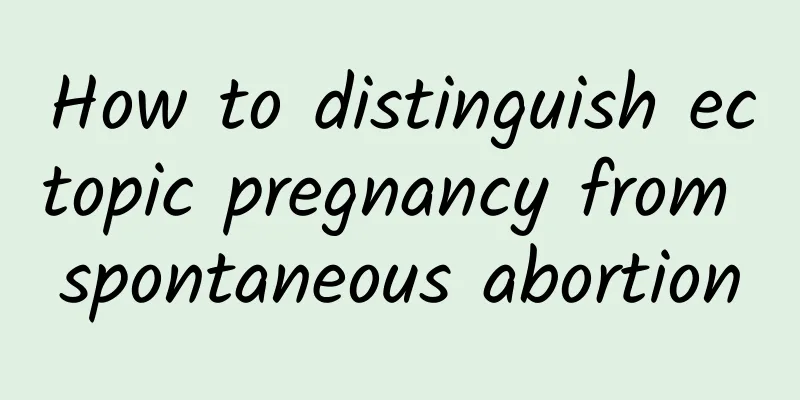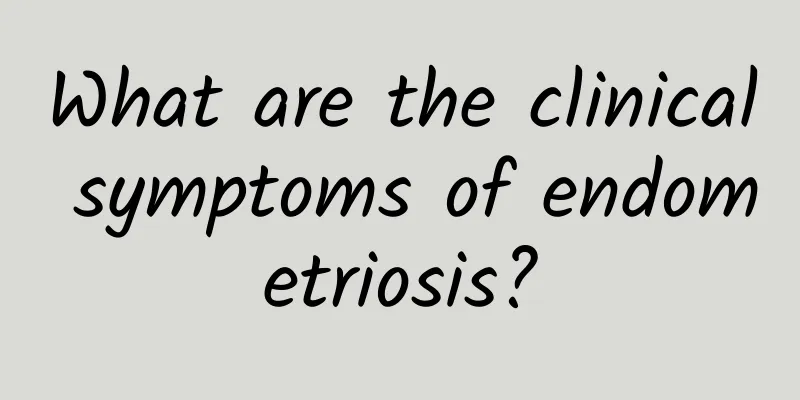How to distinguish ectopic pregnancy from spontaneous abortion

|
Ectopic pregnancy and spontaneous abortion are two completely different concepts and must be carefully distinguished during clinical diagnosis. 1. Conceptual distinction Ectopic pregnancy refers to the phenomenon that the fertilized egg is affected by certain factors and implants and develops in places outside the uterine cavity, such as the fallopian tube, uterine horn, abdominal cavity, ovary, etc. Because the implantation site is narrow and thin-walled, it cannot expand fully and cannot accommodate the growth and development of the fertilized egg, making it easy for the embryo to pass through the wall tube, destroying the blood vessels and causing heavy bleeding. Spontaneous abortion is an intrauterine pregnancy, which is a phenomenon in which the embryo or fetus automatically leaves the mother's body and is expelled before 20 weeks of pregnancy for some reason. 2. Differentiate based on symptoms Patients with ectopic pregnancy have the following two symptoms that can be distinguished from spontaneous abortion, namely abdominal pain, which is often sudden tearing or paroxysmal pain on one side of the lower abdomen, and is mostly accompanied by nausea and vomiting. If the diaphragm is stimulated, it will also cause radiating pain in the scapula. If fluid accumulation in the pelvic cavity occurs, the patient may even have a feeling of heaviness and defecation in the anus, which is a major basis for diagnosing ectopic pregnancy; irregular vaginal bleeding, mostly in the form of drops of dark brown blood, generally not exceeding the menstrual volume. If the patient's vaginal bleeding symptoms and abdominal pain occur at the same time, it means that the embryo has been damaged. If there is only abdominal pain but no vaginal bleeding, it is mostly that the embryo is still alive or an abdominal pregnancy has occurred. It is an important reference standard for the diagnosis of ectopic pregnancy and also provides a strong basis for subsequent treatment. |
<<: Motherwort soup can effectively relieve dysmenorrhea
>>: Precautions before examination for patients with vaginitis
Recommend
The harm of endometrial tuberculosis to the body
Today's society is under great pressure, and ...
Do I need surgery for uterine fibroids? Medication for uterine fibroids
With the popularization of women's disease ex...
The consequences of untreated bacterial vaginosis
What harm will bacterial vaginosis cause if it is...
Shenzhen abortion charges
If a woman becomes pregnant unexpectedly, abortio...
So strong! Study: Eating 2 handfuls of nuts a week can prevent heart disease, dementia
Heart disease is more common in winter, and reduc...
What are the risks of having an abortion if the uterus is too thin?
What are the risks of having an abortion if the u...
Why does hydatidiform mole occur?
Why does hydatidiform mole occur? Hydatidiform mo...
What is painless abortion and what types of painless abortion surgeries are there?
Due to some problems, some mothers may not be abl...
What is the reason for recurring candidal vaginitis?
Candidiasis generally refers to vulvovaginal cand...
Are cervical hypertrophy and erosion contagious?
Cervical hypertrophy and erosion are not contagio...
Can Chinese medicine be used for treatment after painless abortion?
Unexpected pregnancy is something that every woma...
How to treat ovarian cysts in women
How to treat ovarian cysts? Ovarian cysts are gen...
Determine the symptoms of premature ovarian failure
If we know the symptoms of premature ovarian fail...
Eat a lot of oatmeal to lose weight but not afraid of getting fat? Nutritionist Huang Xiaotong: Be careful of these 3 foods or you will get fatter if you eat them
Speaking of good foods that help lose weight, oat...
What diseases can cervical warts cause?
The impact of cervical warts, a sexually transmit...









